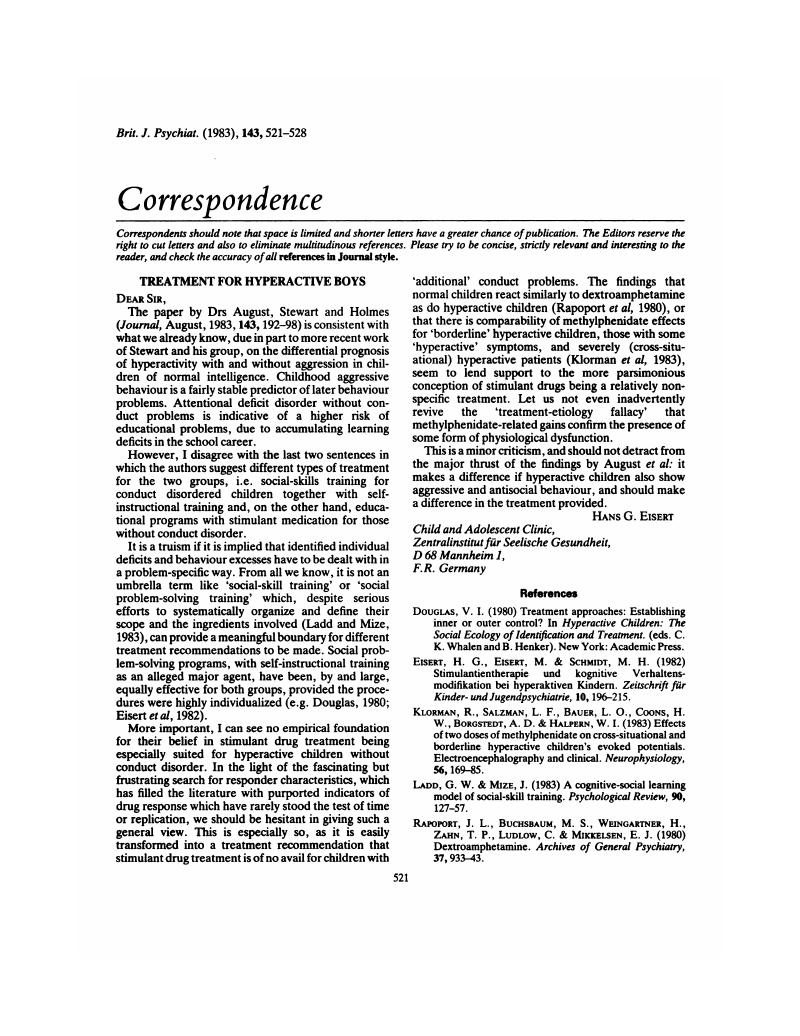No CrossRef data available.
Article contents
Treatment for Hyperactive Boys
Published online by Cambridge University Press: 29 January 2018
Abstract
An abstract is not available for this content so a preview has been provided. As you have access to this content, a full PDF is available via the ‘Save PDF’ action button.

- Type
- Correspondence
- Information
- Copyright
- Copyright © 1983 The Royal College of Psychiatrists
References
Douglas, V. I. (1980) Treatment approaches: Establishing inner or outer control? In Hyperactive Children: The Social Ecology of Identification and Treatment. (eds. Whalen, C. K. and Henker, B.). New York: Academic Press.Google Scholar
Eisert, H. G., Eisert, M. & Schmidt, M. H. (1982) Stimulantientherapie und kognitive Verhaltensmodifikation bei hyperaktiven Kindern. Zeitschrift für Kinder- und Jugendpsychiatrie, 10, 196–215.Google Scholar
Klorman, R., Salzman, L. F., Bauer, L. O., Coons, H. W., Borgstedt, A. D. & Halpern, W. I. (1983) Effects of two doses of methylphenidate on cross-situational and borderline hyperactive children's evoked potentials. Electroencephalography and clinical. Neurophysiology, 56, 169–85.Google Scholar
Ladd, G. W. & Mize, J. (1983) A cognitive-social learning model of social-skill training. Psychological Review, 90, 127–57.Google Scholar
Rapoport, J. L., Buchsbaum, M. S., Weingartner, H., Zahn, T. P., Ludlow, C. & Mikkelsen, E. J. (1980) Dextroamphetamine. Archives of General Psychiatry, 37, 933–43.Google Scholar





eLetters
No eLetters have been published for this article.